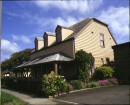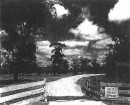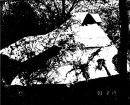Maffra Avenue of Honour and Cenotaph
Sale Road MAFFRA, WELLINGTON SHIRE
-
Add to tour
You must log in to do that.
-
Share
-
Shortlist place
You must log in to do that.
- Download report
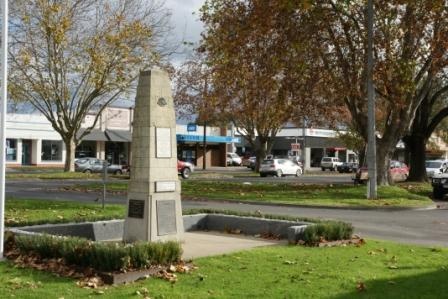

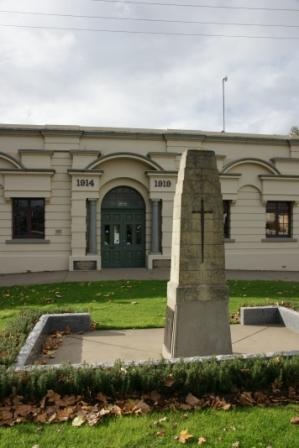
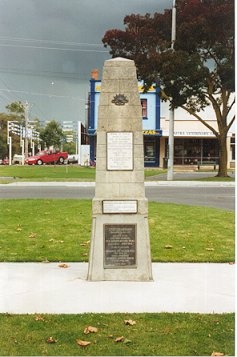
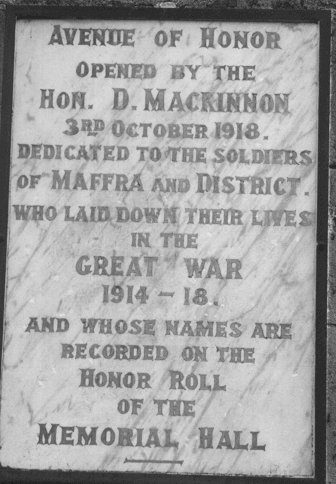
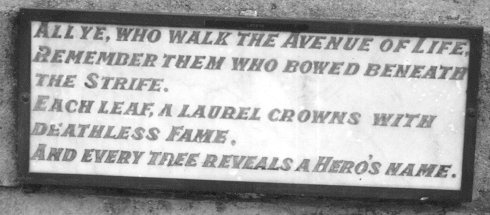
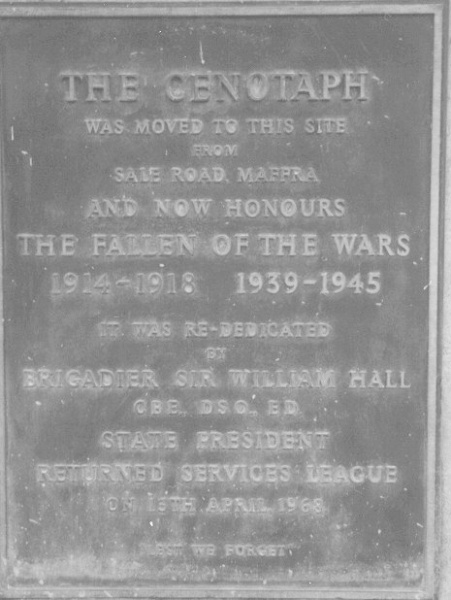
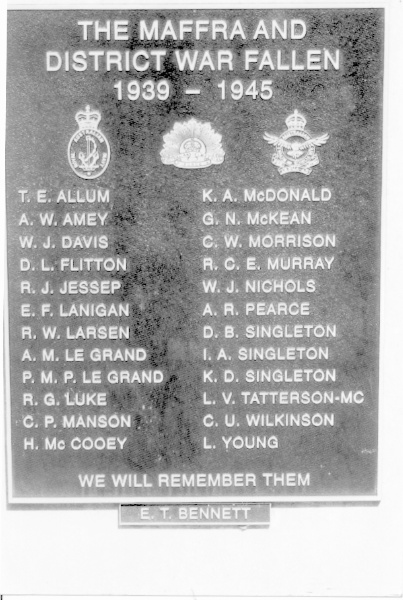
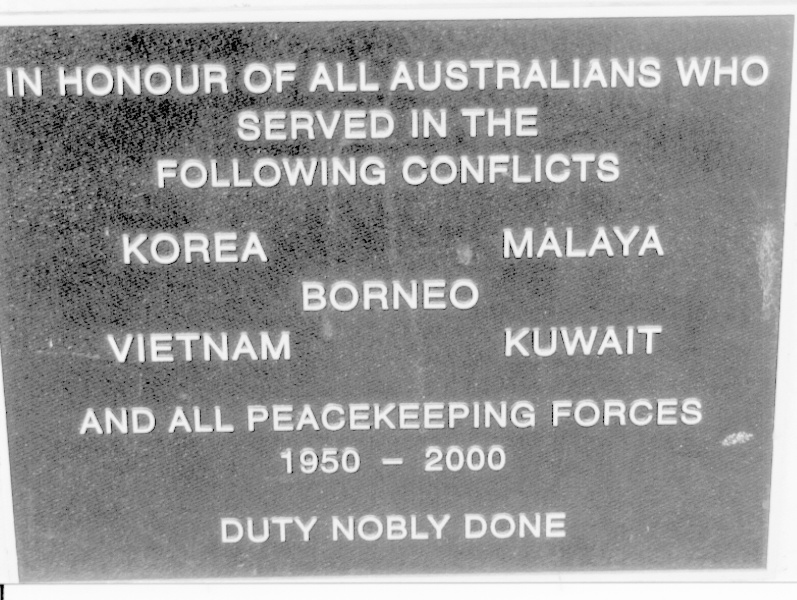
Statement of Significance
This record has minimal details. Please look to the right-hand-side bar for any further details about this record.
-
-
Maffra Avenue of Honour and Cenotaph - Physical Description 1
Avenue. 139 trees
Maffra Avenue of Honour and Cenotaph - Historical Australian Themes
Remembering the fallen
Maffra Avenue of Honour and Cenotaph - Usage/Former Usage
Commemoration
Veterans Description for Public
Maffra Avenue of Honour and Cenotaph - Veterans Description for Public
The Maffra Avenue of Honour was planted in 1918 to commemorate the First World War. A total of 139 trees were planted. It no longer exists, however a pillar has been erected in its place on the median strip, Johnston Street opposite the Memorial Hall. Marble tablets attached to the pillar note that the avenue was "Opened by the Hon. D Mackinnon 3rd October 1918, dedicated to the soldiers of Maffra and District who laid down their lives in the Great War 1914-18. And whose names are recorded on the Honor Roll of the Memorial Hall." The pillar was later re-dedicated by Brigadier Sir Willam in memory of the Second World War. Another tablet is inscribed with the following verse:
All Ye, who walk the avenue of life,
Remember them who bowed beneath
The Strife.
Each leaf, a laurel crowns with
Deathless fame.
And every tree reveals a hero's name.
Plaques recently added commemorate conflicts in Korea, Malaya, Borneo, Vietnam, Kuwait and Peacekeeping Forces between 1950-2000.
In Australia, commemorative trees have been planted in public spaces since the late nineteenth century. Arbor Days were held regularly in most Victorian State Schools during the late 1800s and early 1900s, and numerous trees were planted in parks in Melbourne and throughout Victoria to mark the visits of important and famous people.
This tradition of commemorative planting was continued in 1901 when at the end of the Boer War trees were often planted for each soldier of the district who was killed in South Africa. These plantings, however, rarely consisted of more than two or three trees in each town.
During and after the First World War avenues of honour consisting of trees lining significant streets became a popular form of commemoration. They represented a new egalitarian approach to the commemoration of soldiers where rank was not a consideration: each tree symbolises a person.
Avenues of honour are a uniquely Australian phenomenon. Australians, and in particular Victorians, embraced the idea of planting them more enthusiastically than any other country in the world. Dating from May 1916, the Eurack Avenue of Honour is the earliest known avenue of honour to be planted in Victoria.
By the time of the Second World War avenues of honour had declined in popularity as a means of commemoration. Today it is estimated that over 300 avenues of honour have been planted in Victoria to commemorate service personnel since 1901.
-
-
-
-
-
Maffra Avenue of Honour and Cenotaph
 Vic. War Heritage Inventory
Vic. War Heritage Inventory
-
1 Brockenshire Street
 Yarra City
Yarra City -
1 Bundara Street
 Yarra City
Yarra City -
1 Forster Street
 Hobsons Bay City
Hobsons Bay City
-
-




